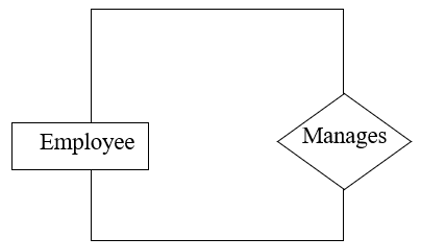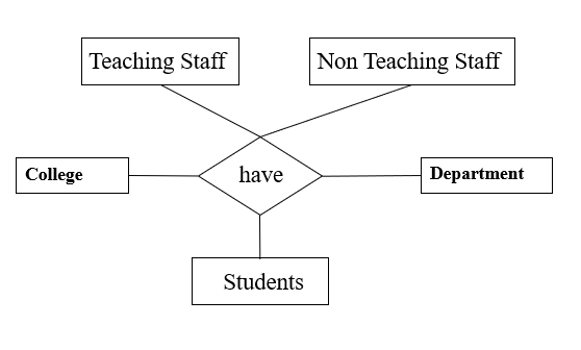The degree of relationship means the number of entities associated with a relationship in a relational model. Based on the number of entities associated we have the following degree of relationships.
Unary Relationship
In this only a single entity is associated in a relation. It is mostly used to represent the recursive relationship, which means a single entity can be further divided into multiple categories. Like in a company multiple employees work. To manages these all employees a manager is appointed who is also counted as an employee. Here manager is an employee first then a manager. So, we can represent this relationship like this:

Binary Relationship
In this, two entities are associated in a relationship. This is most commonly used. This is easy to describe and maintains simplicity.

Here in the above relation, two entities are associated in a single relationship, so the degree of relationship is 2 hence it is a Binary relationship.
Ternary Relationship
In this, three entities are associated with a relationship.

Here in the above relation, an employee works in an office, but the employee should be working in a specific department. So, the employee works in a department in an office.
N-ary Relationship
In this, more than three entities are associated with a relationship.

Here in the above relation, a college has multiple sections like staff, departments, students, etc. N-ary relationship may have N numbers of entities associated in a single relationship.
- Here Unary relationship is used very rarely.
- A binary relationship is used frequently and most commonly used.
- Ternary and Nary relationships are counted in higher degree relationships and used least. Most of the time the higher degree relationship decomposed into a binary relationship to make the relationship easier and simple.
The post Degree of Relationship in DBMS appeared first on The Crazy Programmer.
from The Crazy Programmer https://ift.tt/Q9O8kGb
Comments
Post a Comment